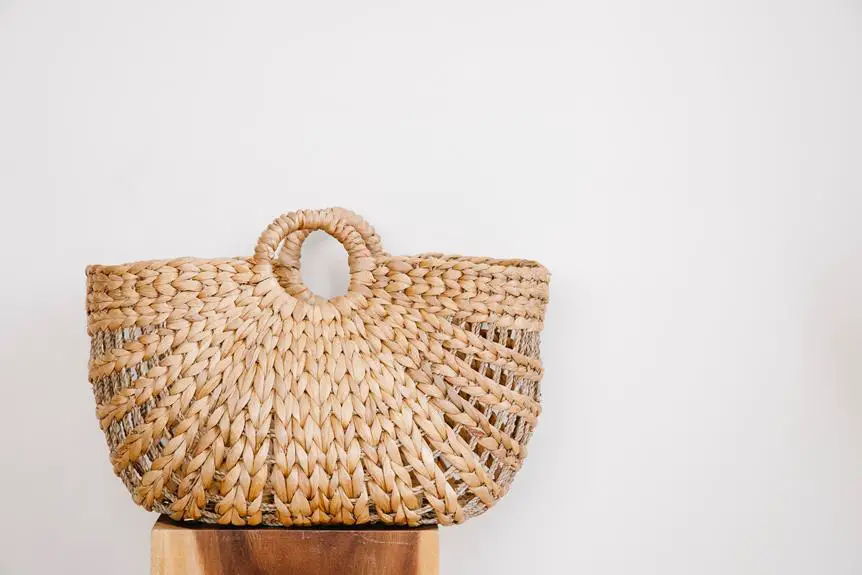When it comes to eco-friendly fashion, you want to ensure that every thread aligns with your values.
Baumwolle, commonly known as organic cotton, has garnered attention for its potential as a sustainable fabric.
In this exploration, we delve into the environmental impact of Baumwolle production, its sustainability in fashion, comparisons with other fabrics, the lifecycle of Baumwolle clothing, ethical considerations in production, and innovations in sustainable farming.
This comprehensive analysis will equip you with the knowledge to make informed choices in your pursuit of eco-friendly fashion.
Key Takeaways
- Baumwolle production has a significant environmental impact due to the use of synthetic fertilizers and pesticides, as well as high water consumption.
- Sustainable cultivation methods, such as organic farming and water-efficient techniques, can mitigate the environmental impact of Baumwolle.
- Fabrics like Tencel, recycled polyester, and linen have a lower environmental footprint compared to Baumwolle and are considered more eco-friendly.
- Ethical considerations, such as fair labor practices and transparency in the supply chain, are crucial for the sustainability of Baumwolle in fashion.
The Environmental Impact of Baumwolle Production
You should consider the environmental impact of Baumwolle production when evaluating its eco-friendliness for fashion. Baumwolle, or cotton, is a widely used fabric in the fashion industry, but its production can have significant environmental implications. The cultivation of conventional cotton often involves the use of synthetic fertilizers and pesticides, which can lead to soil degradation, water pollution, and harm to surrounding ecosystems. Additionally, the high water consumption associated with cotton farming is a major concern, especially in regions already facing water scarcity.
However, ethical sourcing practices and sustainable cultivation methods can mitigate these environmental impacts. Organic cotton, for example, is grown without synthetic chemicals, promoting healthier soils and reducing the risk of water contamination. Furthermore, some farmers are adopting more water-efficient techniques, such as drip irrigation, to minimize the water footprint of cotton production.
Considering the environmental impact of Baumwolle production is essential for making informed decisions about its eco-friendliness in fashion. By prioritizing ethical sourcing and supporting sustainable practices, the fashion industry can work towards reducing the environmental footprint of Baumwolle and promoting more eco-friendly alternatives.
Sustainability of Baumwolle in Fashion
The sustainability of Baumwolle in fashion largely depends on implementing ethical sourcing practices and adopting sustainable cultivation methods to mitigate its environmental impact. When considering the environmental and social effects of baumwolle farming, it is essential to prioritize sustainable practices throughout the entire supply chain.
| Sustainable Practices for Baumwolle Farming | Benefits |
|---|---|
| Organic farming techniques | Reduces chemical usage, minimizes environmental impact |
| Crop rotation | Improves soil fertility, reduces the need for synthetic fertilizers |
| Water conservation measures | Reduces water usage, mitigates strain on local water sources |
| Fair labor practices | Ensures ethical treatment of workers, supports local communities |
Comparing Baumwolle With Other Fabrics
When comparing baumwolle with other fabrics, consider its environmental impact and production processes. Sustainable fashion relies on making informed fabric choices that minimize harm to the environment. Here's how baumwolle stacks up against other fabrics:
- Environmental Impact:
- Baumwolle, being a type of cotton, requires a significant amount of water and pesticides for cultivation.
- Compared to organic cotton or hemp, baumwolle's environmental impact in terms of water usage and chemical inputs is higher.
- Production Processes:
- The production of baumwolle involves extensive chemical processing, including bleaching and dyeing, which can lead to water pollution and health hazards for workers.
- In contrast, fabrics like Tencel, made from sustainably sourced wood pulp using a closed-loop production process, have a lower environmental impact and are considered more eco-friendly.
- Fabric Comparison:
- When comparing baumwolle with fabrics like recycled polyester or linen, it becomes evident that these alternatives have a lower environmental footprint.
- Recycled polyester, for instance, reduces the demand for new petroleum-based materials and minimizes waste, making it a more sustainable choice for eco-friendly fashion.
Careful consideration of these factors is crucial for sustainable fashion, as it enables consumers and designers to make informed choices that align with environmental values.
The Lifecycle of Baumwolle Clothing
Considering the impact of baumwolle clothing on the environment is crucial for understanding its lifecycle. Sustainable practices play a significant role in the production of baumwolle clothing. From the cultivation of the cotton plant to the manufacturing process, efforts are made to minimize environmental impact.
Organic farming practices, such as crop rotation and the limited use of synthetic fertilizers and pesticides, contribute to reducing the ecological footprint of baumwolle clothing. Additionally, advancements in technology have led to more efficient water and energy usage during the production phase.
The lifecycle of baumwolle clothing also encompasses the disposal and management of textile waste. Sustainable fashion brands are increasingly focusing on creating clothing that can be easily recycled or biodegraded at the end of its life. By utilizing innovative recycling techniques and promoting circular fashion, the industry aims to reduce the amount of textile waste that ends up in landfills.
Furthermore, consumer awareness and responsible disposal practices are essential for prolonging the lifecycle of baumwolle clothing and minimizing its environmental impact.
Ethical Considerations in Baumwolle Production
How do ethical considerations impact the production of baumwolle clothing in terms of sustainability and social responsibility?
- Fair Labor Practices: Ethical baumwolle production involves ensuring fair wages and safe working conditions for all laborers involved in the production process. This includes the farmers cultivating the cotton, the workers involved in the manufacturing process, and all other individuals contributing to the supply chain.
- Organic Certification: Obtaining organic certification for baumwolle clothing signifies that the cotton has been grown without the use of synthetic pesticides or fertilizers. This not only benefits the environment but also ensures that the health and wellbeing of the agricultural workers and nearby communities aren't compromised by harmful chemicals.
- Transparency and Traceability: Ethical baumwolle production requires transparency throughout the supply chain, allowing consumers to trace the origins of the cotton and the processes involved in its production. This transparency fosters accountability and ensures that social and environmental standards are upheld at every stage.
When considering ethical considerations in baumwolle production, it's essential to prioritize fair labor practices, organic certification, and transparency to promote sustainability and social responsibility in the fashion industry.
Innovations in Sustainable Baumwolle Farming
To ensure sustainable baumwolle farming, you must stay informed about the latest advancements and methods that promote environmental stewardship and ethical practices. Sustainable practices in baumwolle farming are increasingly being implemented to minimize the environmental impact of cotton cultivation.
One key innovation is the adoption of organic cultivation methods. Organic baumwolle farming eliminates the use of synthetic pesticides and fertilizers, relying instead on natural alternatives and crop rotation to maintain soil health and fertility. This approach not only reduces chemical runoff and soil degradation but also supports biodiversity and promotes the overall ecological balance of the farming environment.
In addition to organic cultivation, sustainable baumwolle farming practices also involve water conservation and efficient irrigation techniques. Innovations such as drip irrigation systems and rainwater harvesting help to minimize water usage while maintaining adequate moisture levels for cotton crops.
Furthermore, advancements in integrated pest management and the use of beneficial insects as natural predators contribute to reducing the reliance on harmful pesticides, thus promoting a more sustainable and eco-friendly approach to baumwolle farming.
Staying abreast of these sustainable farming practices is crucial for ensuring that baumwolle remains a viable and environmentally responsible material for eco-friendly fashion.
Consumer Tips for Eco-Friendly Baumwolle Fashion
For eco-friendly baumwolle fashion, consider purchasing garments made from certified organic cotton. Sustainable sourcing is crucial for eco-friendly fashion, and certified organic cotton ensures that the fabric is grown without the use of synthetic pesticides or fertilizers, promoting a healthier environment for both the farmers and the surrounding ecosystems.
In addition to opting for certified organic cotton, here are three consumer tips to embrace eco-friendly baumwolle fashion:
- Look for Fair Trade Certified Clothing: When shopping for baumwolle fashion, seek out Fair Trade Certified clothing. This certification ensures that the cotton farmers and workers involved in the production process are paid fair wages and work in safe conditions, contributing to the ethical and sustainable production of baumwolle garments.
- Choose Timeless Styles: Embrace timeless fashion trends when selecting baumwolle clothing. By investing in classic, versatile pieces, you can build a sustainable wardrobe that transcends fleeting trends, reducing the environmental impact of fast fashion and promoting a more sustainable approach to style.
- Support Sustainable Brands: Research and support brands that prioritize sustainable and ethical practices in their baumwolle fashion production. Look for brands that are transparent about their sourcing and manufacturing processes, and prioritize environmentally friendly practices throughout their supply chain.
Frequently Asked Questions
Are There Any Potential Health Risks Associated With Wearing Baumwolle Clothing?
Potential risks associated with wearing baumwolle clothing include allergies, irritation, and skin sensitivity for some individuals. It's important to consider your personal sensitivities and consult with a healthcare professional if needed.
What Are the Social and Economic Impacts of Baumwolle Production on Local Communities?
Social impact of baumwolle production includes job creation and improved living conditions for local communities. Economically, it provides income stability and infrastructure development. These impacts make baumwolle a beneficial fabric for eco-friendly fashion, supporting both people and the environment.
How Does Baumwolle Fabric Compare in Terms of Durability and Longevity?
In terms of durability and longevity, Baumwolle fabric compares favorably to other eco-friendly options. Its sustainable production practices and minimal environmental impact make it a popular choice for those seeking both durability and sustainability in fashion.
Are There Any Specific Certifications or Standards Consumers Should Look for When Purchasing Eco-Friendly Baumwolle Clothing?
When shopping for eco-friendly baumwolle clothing, look for certifications like GOTS or OEKO-TEX to ensure sustainable sourcing and production. These standards guarantee environmental and social responsibility throughout the fabric's lifecycle.
Can Baumwolle Be Easily Recycled or Upcycled at the End of Its Lifecycle?
Recycling options for Baumwolle are limited due to its blend of natural and synthetic fibers. However, its upcycling potential is high, as it can be repurposed into new textiles or products, contributing to a circular economy.
- What Is Pochampally Ikat? a Journey to India’s Silk City - June 27, 2025
- What Is Pochampally Ikat? a Journey to India’s Silk City - June 27, 2025
- What Is Pochampally Ikat? a Journey to India’s Silk City - June 27, 2025






